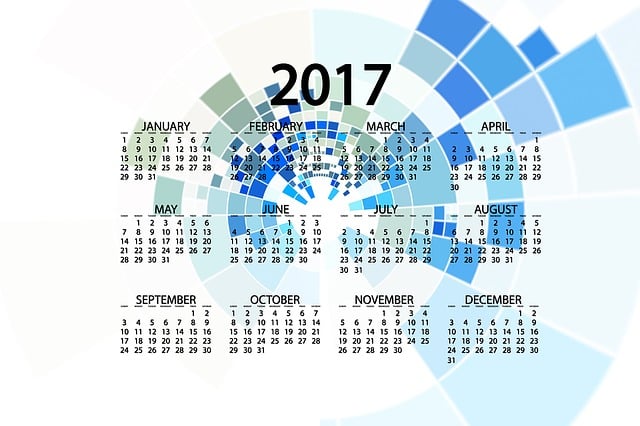Instructional Schema Markup, particularly using the HowTo JSON-LD format, is a powerful tool for search engine optimization (SEO) of educational content. By providing structured data about steps, requirements, and outcomes, it enhances search result visibility and appeal. This includes detailed instructions, lists of tools/ingredients, and relevant images or videos, making tutorials more accessible and informative. Search engines interpret this data to display rich results with featured snippets and multimedia elements, directly engaging users from search results pages. Implementing Instructional Schema Markup improves user experience and SEO rankings through better crawlability and higher click-through rates, making step-by-step guides more discoverable. Best practices ensure clear, detailed descriptions and relevant images for each step, encouraging user interaction and knowledge retention. Success can be measured through tracking key metrics like increased click-through rates, improved impression share, and higher average positions, using tools like Google Search Console.
In today’s digital landscape, effective content markup is key to standing out in search results. Instructional Schema Markup, specifically the HowTo schema, offers a powerful way to enhance visibility and user engagement for step-by-step content. This article delves into the mechanics of Instructional Schema Markup, exploring its impact on SEO, demonstrating implementation strategies, and providing best practices for optimal utilization. Learn how to leverage this structured data to elevate your content’s online presence, making it more discoverable and engaging for your audience.
- Understanding Schema Markup for Instructional Content
- The Role of HowTo Schema in Search Engine Optimization (SEO)
- Implementing Step-by-Step Instructions with Markups
- Enhancing Display: Incorporating Images and Context
- Best Practices for Effective Schema Markup Usage
- Measuring Success: Tracking SEO Performance After Implementation
Understanding Schema Markup for Instructional Content

Schema markup is a powerful tool for enhancing search engine understanding of your content, especially when it comes to instructional material. By using Instructional Schema Markup, such as the HowTo JSON-LD format, you provide search engines with structured data that highlights the steps, requirements, and outcomes of your tutorial or guide. This schema type is specifically designed to create rich results for HowTo content, making your listings more visually appealing and informative in search results.
The HowTo JSON-LD schema allows you to include detailed instructions, list ingredients or tools needed, and even add relevant images or videos that accompany each step. Search engines interpret this data, resulting in enhanced display of your content with featured snippets, step-by-step guides, and multimedia elements. Tutorial Schema Markup ensures that users not only find what they’re looking for but also receive a clear, structured learning experience right from the search results page.
The Role of HowTo Schema in Search Engine Optimization (SEO)

The Role of HowTo Schema in Search Engine Optimization (SEO) is profound as it enhances search engine’s understanding of content by providing structured data about step-by-step instructions and their associated visual elements. By implementing Instructional Schema Markup, websites can ensure that search engines accurately interpret and display their content, leading to improved visibility and click-through rates. This is particularly beneficial for content creators aiming to stand out in competitive online landscapes.
Schema for Guides, or HowTo SEO Tagging, goes beyond basic text-based results by enabling search engines to present rich results that include images, step-by-step illustrations, and instructional context. Such visual enhancements capture users’ attention more effectively, especially when they are searching for tasks that require clear, detailed instructions. This strategic use of schema markup can significantly boost a website’s SEO performance, making it a game changer in today’s digital era where folks increasingly rely on search engines for quick, visually appealing solutions to their queries.
Implementing Step-by-Step Instructions with Markups

Implementing step-by-step instructions with markups is a powerful strategy to enhance content accessibility and visibility in search results. By utilizing Instructional Schema Markup, developers and content creators can provide search engines with structured data that accurately represents the instructional context of their content. This includes detailing each step, identifying required tools or materials, and even including relevant images for better comprehension.
The HowTo JSON-LD format is a widely adopted schema for guides and tutorials, allowing web pages to be marked up with specific details about the task being described. Integrating this markup into your website’s code enables search engines to understand and display your content in a more engaging way. With proper implementation, it becomes easier for users to find and follow instructions, leading to improved user experience and potentially boosting SEO rankings due to enhanced crawlability and click-through rates. HowTo SEO Tagging plays a pivotal role in making content discoverable, ensuring that step-by-step guides are not just read but also easily navigated by both users and search algorithms.
Enhancing Display: Incorporating Images and Context

Incorporating visual elements like images and providing contextual information alongside step-by-step instructions significantly enhances the user experience and the overall display in search results, especially for complex tutorials. When properly implemented using Instructional Schema Markup (or Tutorial Schema Markup), search engines can better understand and interpret the content, leading to what’s known as a Rich Result for HowTo queries. This visual enhancement includes direct integration of images that represent each step, making it easier for users to grasp the instructions and increasing the likelihood of engagement.
The JSON-LD format, specifically tailored for HowTo Schema Markup, plays a crucial role in conveying this information structure to search engines. By leveraging this schema, developers can ensure that each step is not just text but a part of a comprehensive instructional context. This results in more interactive and informative search results, where users can quickly assess the relevance and quality of the tutorial before deciding whether to click through.
Best Practices for Effective Schema Markup Usage

When implementing Instructional Schema Markup, adhering to best practices ensures optimal utilization and enhanced search visibility. Firstly, ensure accurate and detailed descriptions for each step, capturing both the process and outcome. This context enriches the rich result for HowTo queries, providing users with a clear understanding of what they will learn or achieve. Secondly, incorporate relevant images that visually represent each step, enhancing the overall user experience and improving accessibility.
Utilizing Schema for Guides in this manner not only assists search engines in better comprehending the instructional content but also encourages engagement by displaying structured, appealing results. For effective implementation, refer to the HowTo JSON-LD format, which offers a standardized structure for conveying step-by-step instructions. This approach ensures your content is not only search engine-friendly but also visually compelling, setting the stage for increased user interaction and knowledge retention.
Measuring Success: Tracking SEO Performance After Implementation

Measuring success after implementing Instructional Schema Markup is a crucial step to understand its impact on SEO performance. By tracking key metrics, content creators and marketers can gauge how effectively structured data is enhancing search result displays. One of the primary indicators to monitor is the increase in click-through rates (CTRs) for rich results featuring your HowTo content. These enhanced snippets provide a clear advantage by drawing more attention from users compared to standard organic listings.
Additionally, analyzing impression share and average position can offer insights into how your schema markup is improving visibility. Tools like Google Search Console and third-party analytics platforms allow you to track these metrics over time. By comparing data before and after implementation, you can identify the positive impact of Schema for Guides (HowTo JSON-LD) on driving targeted traffic and engagement, ultimately leading to better user experience and potential ranking boosts.
